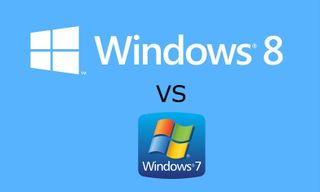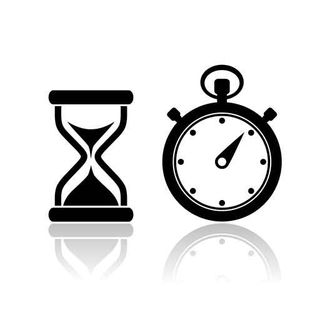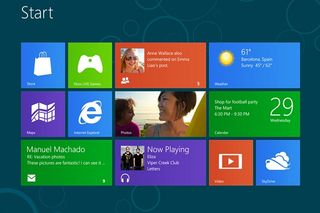Windows 8.1 vs. Windows 7 – Which is best for you?
As Windows 10 draws nearer and Microsoft distances itself from older OS, we look at the best option for your PC

Update - Windows 10 is on the way. This latest iteration of Microsoft's desktop OS looks set to leave both Windows 7 and Windows 8 in the dust, and we can't wait for the full release. It's sporting some seriously cool features, too - the ability to flick between separate desktop environments, integration of Microsoft'sdigital assistant 'Cortana' and the return of the traditional start menu all have us pretty excited.
To find out when you can expect to get your hands on the full RTM version of Windows 10, click here.
Check out how it stacks up against the previous OS in our full comparison: Windows 10 vs Windows 8.1.
Or, to find out what's in the latest technical preview build, take a look at our expert analysis.
Support for Windows XP came to an end in April 2014, and Microsoft has set a date of January 2015 for the withdrawal of mainstream Windows 7 support. This doesn't mean Windows 8's predecessor is out of the game, however, and remains a popular option for consumers and business users alike.
In fact, recent market share statistics revealed that users choosing to move on from Windows XP are actually opting for Windows 7 rather than Windows 8 or 8.1, with Microsoft's latest operating system not being welcomed as quickly as had been hoped. Until Microsoft stops support for Windows 7, people will continue to choose it over the alternative.
What, then, is the best option for your PC? Following XP's demise, the upgrade candidates were Windows 7 and Windows 8.1, and we have broken down the key features to help you decide which is the better choice (fast forward to our verdict).
1. Boot time
Windows 8 machines only take 10-15 seconds to boot up, with some switching on even faster depending on the SSD. Gone are the days when you have to distract yourself by going to make a cup of tea while your system wakes up.

But how have we gotten to this point? Microsoft engineers combined the hibernation and shutdown modes into one for Windows 8, and Windows 8.1 uses a hybrid boot mode that allows the PC to start up much more quickly. The kernel lets it hibernate instead of shutting down completely, and the use of cores makes it possible to start-up in seconds.
Winner: Windows 8 The faster the machine boots up, the more time you are able to spend on doing more productive things. By the end of the multiple year lifespan of your PC, this can add up to hours of reclaimed time.
2. Enterprise features
Windows 8.1 has more enterprise features than Windows 7, with Windows to Go featured on the Enterprise edition allowing users to start a personalised version of Windows from a USB or any other machine running Windows 7 or 8. It also means that the Windows Store is enabled by default, allowing users to access apps across multiple machines.
IT admins can virtually run Windows without any third-party software. Adding in the optional Hyper-V support for your copy of 8.1 allows you to connect to a server.

Windows 8.1 also has better support for managing mobile devices, with tap-to-print support via NFC and enhanced biometrics, malware resistance and encryption also included.
But IT departments around the world have given Windows 8.1 the cold shoulder in favour of its older siblings. In fact, HP told IT Pro that Windows 7 is the most popular choice for companies upgrading from XP.
"[Businesses] are ignoring Windows 8," said HP project manager Jeff Wood.
What enterprise customers prize over everything is stability, and Windows 7 has time, familiarity, extensive testing and total peripheral compatibility on its side.
Those upgrading from Windows 8 to 8.1 have also run into problems, with users complaining the update broke simple things such as the ability to print.
Winner: Draw Although Windows 8 has more enterprise features as a default, Windows 7 has the benefit of being tried and tested. Then again, further updates for 8.1 have fixed many of the biggest problems inherent to previous iterations of the OS.
3. Performance
Microsoft used Windows 8 as a guise under which to revamp the engine, and the results is a much faster system that consumes fewer resources than before. This makes it a better choice than Windows 7 for low-end PCs.
The redesign opts for simple colours and fewer visual effects, also contributing to the increased speed due to resources saved compared to the Aero Glass effect of Windows 7.
Overall, Windows 8.1 is better for everyday use and benchmarks than Windows 7, and extensive testing has revealed improvements such as PCMark Vantage and Sunspider. The difference, however, are minimal.
Winner: Windows 8 It's faster and less resource intensive.
4. Interface
The front-facing user interface that characterises Windows 8 has been a huge talking point since it was revealed, and there are several reasons for that. For some, the radical redesign has always felt more like two operating systems meshed together, and it has become the most discussed element of Windows' latest operating system.
When switching on the computer, users are greeted with the now-familiar Start screen a page of apps and live tiles. This Metro interface includes everything in the form of apps, including the classic desktop mode that has proven to be the preferred view for so many. In addition, apps like IE 11 are great for touch screen web browsing, but not much else.
But even the desktop looks a little different on Windows 8, despite the fact that Windows 8.1 did feature the long-awaited return of the start button. This doesn't, however, come with the return of the Start menu (thankfully confirmed for Windows 9 in 2015), instead simply switching users between screens.

To say the revised interface has had a polarising effect is an understatement, and there is no shortage of people who have complained about Metro since it was released. Among their arguments an interface designed for touch doesn't make sense on a desktop computer.
Windows 8.1 has gone some way towards fixing the problem, however, as users can now choose to avoid Metro entirely and boot directly to desktop. Spend a little time setting up the OS, and you can get a comparable, if not slightly better, experience.
There are real UI improvements with 8.1. You can add Start bars to dual monitors with separate wallpapers on each. There's also a fast universal search tight there on the Start screen, which you can access by hitting the Windows key and typing to search local files, OneDrive files, apps, settings and the internet. You can even browse OneDrive files through File Explorer (aka Windows Explorer).
Winner: Windows 7 The classic, familiar desktop remains popular for a reason, and thus wins the day. Windows 8 simply tries to do too much too quickly and, even though the 8.1 update allows users the option of booting straight to desktop, Metro still has a nasty habit of popping up when it's not welcome.
5. Security
Security is a massive issue for both individual users and businesses and, as the most popular desktop operating system, Windows is sadly the primary target for malware and viruses.
Windows 7 and Windows 8.1 share many security features, both of them using BitLocker Drive encryption, but 8.1 goes one step further by enabling them by default. You can always download Microsoft Security Essentials for Windows 7, and it's free, but its younger brother has it already built into the system.
Secure booting on UEFI systems is also included with 8.1, making it much harder for rogue malware to infect the bootloader. PCs running Windows 8.1 can also automatically connect to VPNs.
Winner: Windows 8 The latest version of Windows smartly has more security features set as default.
Get the ITPro. daily newsletter
Receive our latest news, industry updates, featured resources and more. Sign up today to receive our FREE report on AI cyber crime & security - newly updated for 2024.




